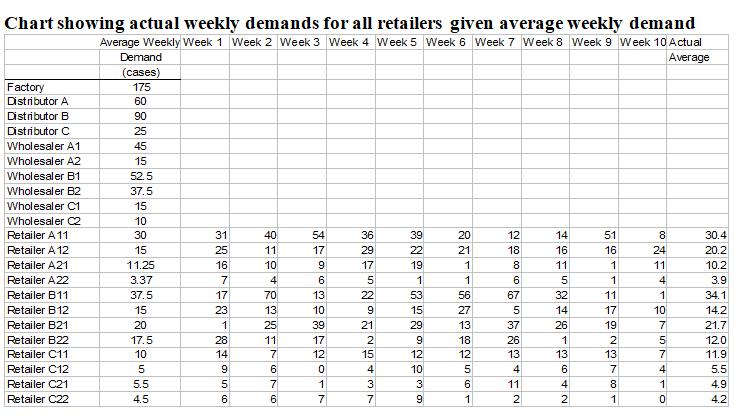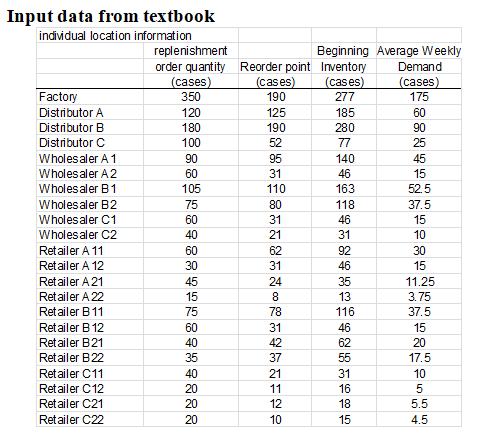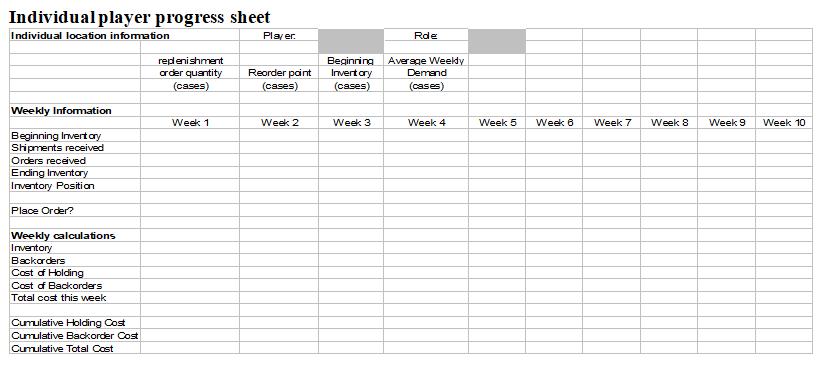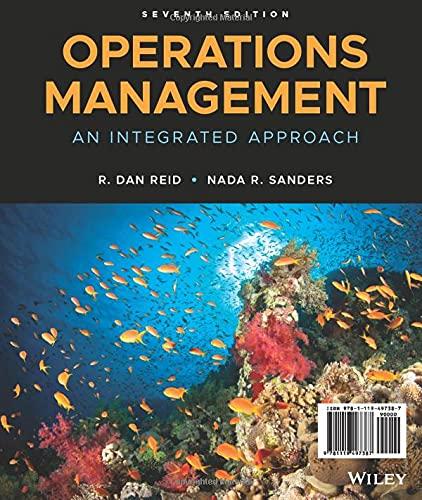Supply chain management games usually take more time than a single class period can provide. With a
Question:
Supply chain management games usually take more time than a single class period can provide. With a fair amount of preparation, the Personal Heart Rate Monitors game can fit into a single (1.5 to 2 hour) class session.
Preparation
Before the day of the game, several steps should be taken:
1) Assign a student or team to run the game. This team will remind the participants as to how the game is run, distribute the actual orders to the retailers each period, and preside overthe game through the weeks.
2) Assign the remaining students to roles (Factory, Distributor, Wholesaler, and Retailer). The [1, 3, 6, 12] structure implies a class size (minus lead team) of 22 students. To adjust the game to class size it may be necessary to prune or add a branch. For example, cutting branch C would eliminate 1 distributor, 2 wholesalers, and 4 retailers, for a total reduction of 7 players. The average weekly demand at the factory would then be adjusted to reflect the loss of demand from Distributor C. The players should review what their specific procedures are before arriving for class the day of the game.
3) Distribute desk placards (e.g., Retailer C11) so that the rest of the players can easily find their needed suppliers and customers once the game begins.
4) Distribute blank inventory position cards so that the players will be able to follow through the five steps listed for each period.
5) Discuss the operating rules. For example, how are backorders handled? Will we stick to FIFO?
6) Prepare cards for the actual weekly demand to the retailers for the number of weeks you wish to run the game and give these to the lead team. The enclosed Excel chart contains an example of actual demands created from the distribution data given in the textbook.
Game Day
It is difficult to have the game run in one class period. With preparation, you should be able to start quickly. Have the players sit in supply chain order: retailers toward the front, factory to the rear. The retailers receive their weekly orders from the leaders. Also, each chain (A, B, C) may be laid out in a front-to-back column.
Once everyone is in place, the lead team can start the game. After they review the setup, they will distribute the order cards to the retailers. The retailers then follow their procedures, communicating with wholesalers when necessary. The wholesalers, distributors, and factory then react to what they have received from their supply chain partners.
The game can get quite hectic. The lead team must keep all the players working on the same week. Only once all players have completed their weekly tasks should the retailers receive the next set of orders.
The lead team will also need to clarify procedures and try to resolve unclear instructions.
All players will record their weekly positions and actions on their game cards.
Follow-up
Playing the game in one class session can be quite hectic. The end-of-game discussion can be assigned as homework, or left for a future class period.
While this game appears in the supply chain chapter, some of the concepts, such as inventory and order records, are better understood after these concepts are presented in later chapters. Running the game early clarifies supply chain concepts and the need for coordination. Running it later allows students to visualize recourse planning issues.



Step by Step Answer:

Operations Management An Integrated Approach
ISBN: 9781119497387
7th Edition
Authors: R. Dan Reid, Nada R. Sanders





